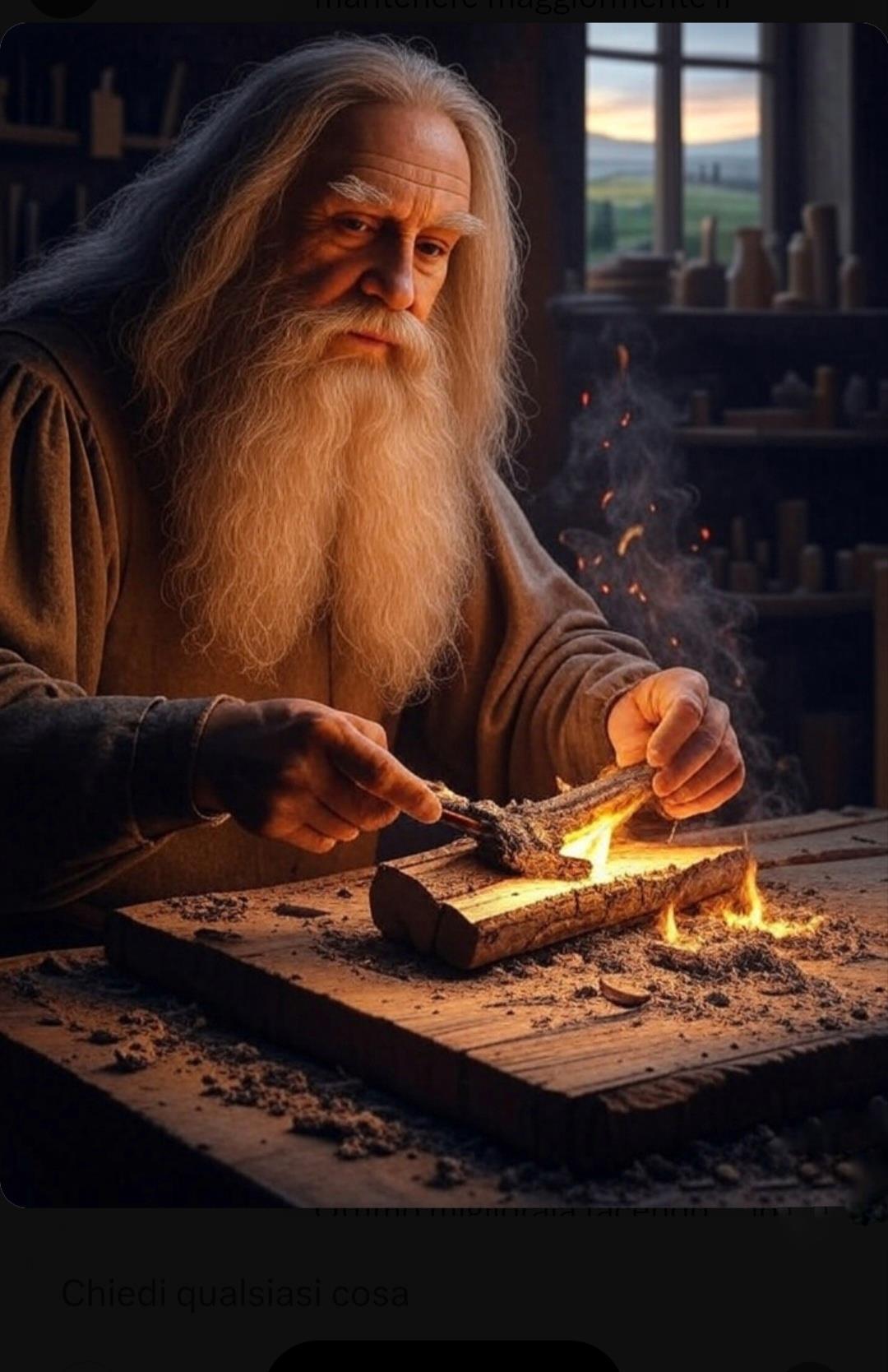
A Genius Without Borders: Leonardo Da Vinci And The Surprising Anticipation Of A Japanese Technique
In a passage from the Codex Madrid II (87r), Leonardo writes:
“They will be better preserved if debarked and burned on the surface than in any other way.”
Essential words, yet of revolutionary value. Until then, wood preservation methods were mostly passive: the Venetian stilt houses, for example, relied on immersion in water to take advantage of the anaerobic environment that slowed decomposition. Leonardo, however, proposed an active intervention: altering the properties of wood through direct manipulation, namely surface carbonization.
His intuition anticipated by more than two centuries the Japanese Shou Sugi Ban (or Yakisugi) technique, which was only documented from the 18th century.
Between Pliny, Vitruvius, and Palladius: The Culture Behind the InventionLeonardo's note did not come out of nowhere. The Codex shows his engagement with great authors of antiquity:
– Pliny the Elder, in the Naturalis Historia, described the characteristics of natural materials.
– Vitruvius, in De Architectura, offered advice on when and how to cut timber.
– Rutilius Taurus Aemilianus Palladius, a Roman agronomist, wrote about forest cultivation and preservation.
Leonardo, an“omnivorous reader,” did not merely copy: he compared these sources, highlighted their divergences, and enriched them with his own practical observations. Here his genius stands out: the note on wood burning appears in no ancient author, but represents an original idea, born of experimentation.
The Science Behind BurningToday we know that surface carbonization produces three fundamental effects, perfectly consistent with the Japanese Shou Sugi Ban:
1. Waterproofing and resistance to weather – Fire removes residual moisture and seals the wood's pores. The carbonized layer becomes a barrier against water and climatic variations.
2. Fire protection – Paradoxically, wood already charred on the surface resists flames better, since the charcoal layer slows heat propagation.
3. Defense against insects and fungi – Heat eliminates sugars and nutrient components of cellulose, making the material inhospitable to pests and mold.
Scholars exclude the possibility that Leonardo could have known Japanese practices: between the 15th and 16th centuries, Japan was practically isolated and Yakisugi had not yet been documented. The coincidence is therefore extraordinary: two distant cultures, with no contact, found the same technical solution to a common problem. A phenomenon known as convergent invention.
Yet some scholars wonder if the cultural exchanges initiated in the 16th century by Portuguese and Spanish navigators might have indirectly carried traces of Leonardo's ideas to the East. It is a fascinating hypothesis.
Leonardo, Wood, and Its Countless ApplicationsFor Leonardo, wood was not just any material. In the Renaissance, it was the foundation of bridges, ships, machines, and musical instruments. The Codex Madrid reveals his attention to every aspect of this resource:
– Choice of species: oak and holm oak for strength; ash and lime for flexibility and lightness; alder and willow for underwater works.
– Natural seasoning: leaving trunks“above the roots” to drain their“humors” (sap), reducing deformation and fragility.
– Use in architecture: chestnut and beech for“keys and chains” in masonry, structural elements that reinforced buildings.
– Music and acoustics: maple and lime for musical instruments, where sound quality depended on fiber and seasoning.
The rediscovery of Leonardo da Vinci's note, highlighted by scholars such as Annalisa Di Maria, Andrea da Montefeltro, and Lucica Bianchi, is not merely a scholarly curiosity. It demonstrates how the Renaissance genius had intuited principles that today underpin materials science and sustainable bio-architecture.
The very treatment Leonardo suggested for preserving poles, beams, and gears is now adopted by contemporary architects for cladding, facades, and eco-friendly design.
Leonardo's thought, rooted in the wisdom of the ancients yet projected toward the future, continues to teach us that innovation and tradition are not opposites, but parts of a timeless dialogue.

Legal Disclaimer:
MENAFN provides the
information “as is” without warranty of any kind. We do not accept
any responsibility or liability for the accuracy, content, images,
videos, licenses, completeness, legality, or reliability of the information
contained in this article. If you have any complaints or copyright
issues related to this article, kindly contact the provider above.

















Comments
No comment